 Global Warming Essay
Global Warming Essay 
Global Warming
It is a well-known fact that now is time of rapid industrial and technological development. The quality of life seems to gradually improve, but the society tends to complain on bad weather, air pollution, too hot summers, too cold winters, natural catastrophes, caused by hurricanes and tsunamis and so on. Is there any border line which has been crossed by the humanity recently, which makes us live in the Age of Consequences? This is the question that was raised and brought to public by the documentary The Inconvenient Truth (Bender, L., Burns, S., David, L., & Guggenheim, 2006). Of all the times of the humanity’s existence, people tend to take all natural phenomena for granted, the attitude was like: “Oh, we are too small for the Earth, we can’t change anything; nothing in this sense depends on us”. Is it so or is this statement misleading thousands of people in their everyday lives, and is the only thing that shakes their sober mind a natural disaster? Has the humanity got enough power to consider the question of being hazardous for the planet we live on? These are the issues that are thoroughly investigated in the documentary. Various data was gathered, analyzed and approved by various scientists in order to discover the impact that modern civilization has on the world ecology. What is more, future predictions of all the analyzed processes were given. Are they a manipulation of facts or a stress of a grave problem that is about to stop us from thinking the planet is too powerful to stand against numerous ecological dangers that were and are being caused by people? Current paper considers the problem of global warming deeper in order to realize its sources, causes and consequences.
First, it would be a huge mistake to view the global warming as a distant abstract process, slowly changing and affecting simple weather patterns and having no connection with people’s lives. On the contrary, it is characterized by the scientists as a rapid developing process that affects nearly every being on the planet directly. It may be a surprise, but the Earth’s ecosystem is an extremely complex system in which every single element is connected with thousands of others. In general global warming is a result of the entrapment of heat through greenhouse gases. The huge amounts of greenhouse gases in the atmosphere prevent the heat from the sun from dissolving or mirroring into space. Among various greenhouse gases carbon dioxide is proved to be the main contributor to such changes. What is more, the trapped heat makes all the water on Earth warmer, which leads to the intensification of evaporation of water masses. Evaporated water masses in their turn trap even more heat (Coon). Rising water temperature worldwide, in its turn, can cause an extinction of many water and water pool connected species. For example, figure 1 shows the connection of reducing ice levels within an arctic food web ecosystem (United States Environmental Protection Agency). The warming process of the oceanic and sea waters in this particular case will cause the extinction of those organisms that depend on cold waters and ice: phytoplankton, zooplankton, different kinds of fish and polar bears.
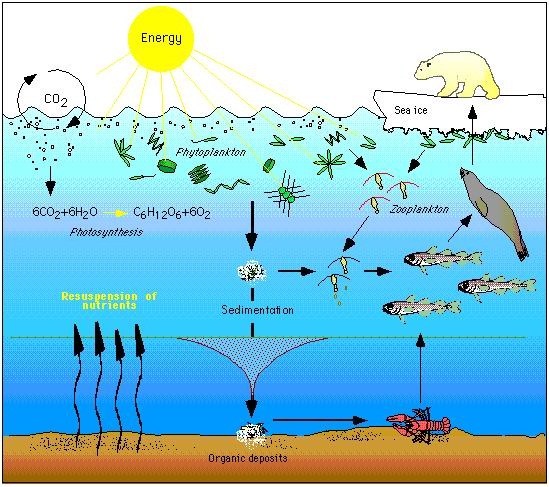
Figure 1: Arctic food web ecosystem
(United States Environmental Protection Agency).
What is more, scientists have discovered that over the past few decades together with melting arctic ice the levels of snow on the Earth’s highest peaks and biggest glaciers decreased dramatically. As it can be seen in Fig. 2, about 90% of glaciers are extensively shrinking worldwide (SkepticalScience).
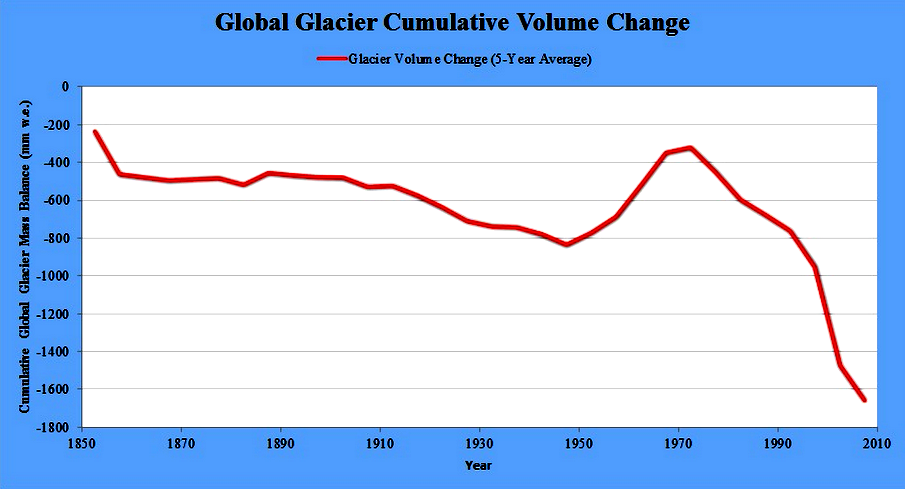
Figure 2: Long-term changes in glacier volume (SkepticalScience)
The glacier and mountain peaks meltdown results in two major problems for people. One of them is the danger of decreasing water supplies. As it is a well-known fact that major rivers form their water sources from meltdown waters and moisture, rapid snow or glacier meltdown may result in the future deficits of ice and snow. For example, Peru’s Cordillera Blanca glaciers are estimated to melt so fast that the water deficit of their arid regions is predicted to happen 20-30 years earlier than expected (McDermott, 2011). Another trouble caused by melting ice peaks, icebergs and glaciers is the danger of water flooding. The average sea levels in the world tend to be increasing. Since the early 1990’s these levels “have been rising at a rate of 0,14 inches (3,5 millimeters) per year” (National Geographic, n.d.). This fact puts a lot of coastal cities, islands and lowland countries at a risk. Together with the rising global warming issue throughout past decades the number of reported flood events has also risen dramatically (Figure 3).
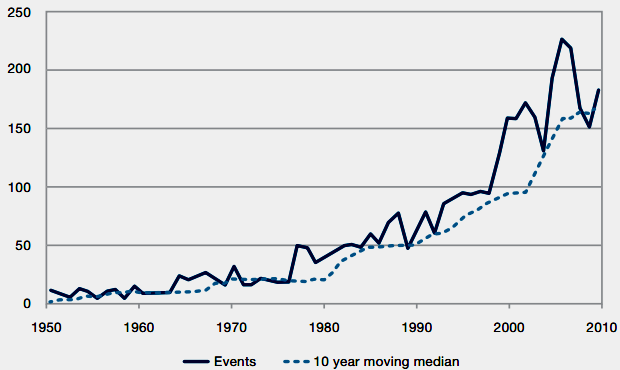
Figure 3: Number of reported flood events (Jha, Bloch, & Lamond, 2012).
Up to date studies have also shown that major urban and overpopulated areas of our planet are at the risk of flooding (Figure 4). In case it happens, this will lead to the biggest social and economic stress the humanity has ever been faced with before.
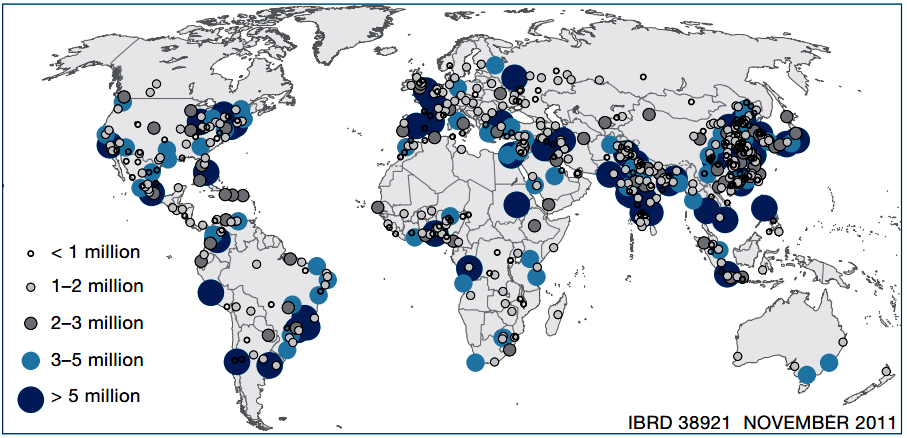
Figure 4: Urban agglomerations with more than 750,000 inhabitants (Jha, Bloch, & Lamond, 2012).
One more thing that is a result of a global warming process according to the “Inconvenient truth” is that with warm oceanic waters and bigger rates of water evaporation stronger hurricanes emerge. For example, National Hurricane Center investigated natural up and down cycles in tropical storm numbers, but the overall tendency was characterized as ascending (Figure 5).
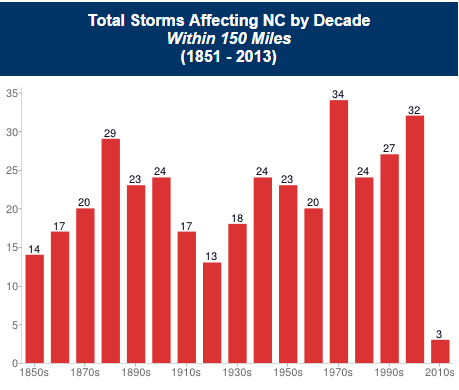
Figure 5. Source: (NC State University, n.d.).
One more reason to consider global warming a serious issue is its connection with the system of ocean currents. The thing is that there is a regular movement of ocean water masses in the form of a global ocean conveyor belt. It is caused by a combination of currents that differ in terms of water temperature, wind-driven currents on the surface, and levels of salt in the deep ocean. Salty, cold water is dense, thus sinking to the bottom of the ocean, whereas warm water remains on the surface as it is less dense (NOAA, n.d.). This conveyor belt has a profound influence on the world climate. For instance only one El Niño event in the Pacific Ocean in 1982/83 claimed nearly 2,000 lives and global losses of an estimated US$ 13 billion (Rahmstorf, n.d.). More than that, as it was stressed in The Inconvenient Truth in case the average oceanic water temperature becomes higher the conveyor is about to stop, which will result in dropping the continents into the next Ice Age.
Summarizing the above mentioned information, one cannot deny the fact that the global warming problem is both the humanity’s and personal challenge.
Second, the vast majority of people today tend to think that the problem of global warming is a man-made issue. They believe that considering the lifetime of the planet, for thousands of ages there had been no rapid changes in its environment and the atmosphere. Temperatures and other factors had been changing gradually, arranging in cycles and following the emergence of new species of life. And these are only last centuries that are characterized by rapid industrial development, massive burning of hydrocarbons and, occasionally (or not), the rapid increase of the average temperature on the planet. According to the statistics on the levels of carbon dioxide, one of a greenhouse gases the release of which is connected with human activities, break annual, decade and even century records, and is now about 399.23 parts per million (NOAA, n.d.). According to the figure 6 below, this level is extremely high, especially compared to the levels of previous centuries.

Figure 6: CO2 levels data, measured indirectly, throughout the Eart’s existence (NASA, n.d.)
As it can be seen from the figure above, there is a certain cyclic pattern of global temperature change, which happens irrespectively of human activity. But starting from 1950’s the situation has changed dramatically. If the above mentioned data is compared with the data from figure 7, it can be assumed that this is the CO2 level factor that influences the temperature levels.
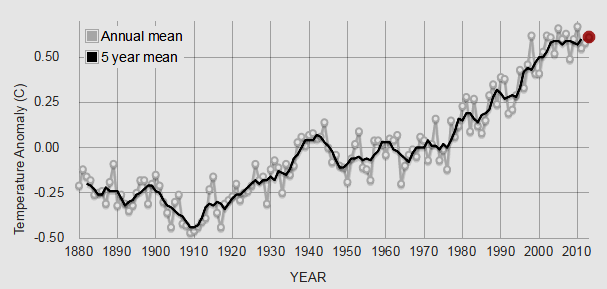
Figure 7: The five-year average variation of global surface temperatures from 1884 to 2013 (NASA, n.d.).
What is more, the levels of global temperature rise are not equal worldwide and depend on several crucial factors. For instance, additional warming occurs in cities and urban areas (NOAA, n.d.).
Scientists tend to connect rising average surface temperature in urban areas with the emissions of carbon dioxide and sooth from numerous factories, plants, power stations and automobiles. In this sense, there are two countries in the world that take the leading positions in CO2 emission. These countries are the US and China. According to the documentary The Inconvenient Truth, released in 2006, the US is the biggest annual contributor to the global warming with 30,3% of all annual contributions throughout the world. It is followed by China with 27,7%. As it was stated, the US and China relate mainly on old technologies of production in heavy industries, which are closely connected with the burning of carbohydrates. These two countries are also blamed by the documentary for not accepting the Kyoto Agreement, which is an international agreement of meeting the ecology standards throughout the country. Negative response to initiatives that are to protect ecology is said to be received mainly from politicians or scientists, who are blamed to be lobbied by industrial corporations. As it is explained in the movie, huge industries fear great amount of losses during the ecology-friendly changes in technology that are to be introduced. Such basis seems to be quite controversial, as Albert Gore states, because the European automobile industry, which had implemented the greenhouse gas emission standards, is far more profitable, than in the US. One of the ways to start managing the problem of greenhouse gas emission is an attempt to force them to ratify the ecologically friendly standards and thus comply with international global warming regulations. In The Inconvenient Truth an example of the state of California was given. It is said that California has taken an initiative of implementing ecologically friendly technologies to substitute their carbohydrate burning ancestors.
It would be unfair to mention the fact that there are certain groups of people, which oppose the opinion that the global warming is a man made problem. They consider the role of it over-hyped and doubt that the humanity may have any impact on our powerful planet. In their opinion, the facts, mentioned in the documentary The Inconvenient Truth, might be doubted. On the one hand, such people believe that the changes in the Earth’s average temperature has not been significant for the past 16 years despite an 8% increase in atmospheric CO2, which represents 34% of all extra CO2 added to the atmosphere from the industrial revolution beginning (Lee, 2013).
Others consider that despite all predictions, the temperatures over the last decades have not been laying outside normal natural variability (Lee, 2013). They believe that the climatic computer models present inaccurate results, thus presenting wrong predictions. The ground for this statement is that the Earth is a self-regulating system that has enough powers to balance such changes as are being introduced by the greenhouse gases. There is also another category of scientists, who believe that the changes in temperature do happen, but they are not connected with recent human activity, but rather solar, volcanoes’ activity and other natural phenomena. Some of the scientists mentioned direct influence of the Sun in terms of climate change: “The Sun has a significant role to play in the long-term and short-term climate change” (Climate Change Debate, 2014). In order to prove their position they give an example of the Medieval Warm Period (roughly 800 to 1200 AD), when the temperatures were so high that the Vikings could settle in Greenland, which had been inhospitable before. Thus, it may be assumed that the temperature graphs, given by scientists, represent the picture of natural micro cycles, omitting macro cycles, which should usually take much more time than a micro cycle of hundred years. From this perspective some scientists might be suspected in the manipulation of facts, either deliberate, or occasional. This brings us to the political side of the question, which is “is there possibly any political power, business structure or a group of people that seeks its own benefit from the belief in human caused global warming?” In the documentary Albert Gore suspects and accuses some scientists as being lobbied by heavy industry and automobile companies. In their turn, some experts oppose him by saying there is no possibility to stop the global warming if there is any. What Gore calls “the inconvenient truth” is blamed by them and called a misconception on the basis that the scientific knowledge is not powerful enough to relieve global warming (American Policy Roundtable, n.d.). What is more, the 2006’s appeal for the melting glaciers is confronted with modern data, which has proved that during the last 20 years from 1990 to 2010, along the East Antarctic ice sheet, a majority of the outlet glaciers have advanced in size. 63% of glaciers advanced from 1974 to 1990, 72% retreated from 1990 to 2000, and 58% from 2000 to 2010 together with the Antarctic sea ice to be currently near record-high levels (Morano, 2013). In its turn, regardless of the connection with the global warming issue, the US’s modern statistics of greenhouse gases emission has improved dramatically. After 2012 China has increased emission of CO2 48% more than the USA, it is said to be responsible for about 25% of the world’s emissions (The Guardian, n.d.).
If the question of the global warming has become purely political, it might reflect the struggle for the market between old and new industrial technologies. Old in this sense represent carbohydrate burning and new is energy saving. If the threat of a man made global warming is approved by different studies, this will lead energy saving industries to prosperity. That is why each of the sides tries to lobby their supporters and attempts to use scientists and their studies as a tool for reaching its own needs. Thus it is extremely important for the scientists to analyze the issue deeply avoiding attempts to be involved in fraud or cheating cases and lawsuits. If there is the truth about the reasons of global warming, it should stay in the hands of a scientist, not a politician.
To draw the conclusion, one can say that one thing is to struggle for the market, while another is to oppose the realities of global warming.
Any struggle without rational basis might lead the humanity to the state where it is too late to change anything. There have been the cases where a bill against the carbon dioxide emission resulted in significant CO2 level drop in the air. The latest changes in the levels of carbon dioxide emission in the US have also shown that everything is in people’s hands. The humanity should continue investigating the problems of global warming and seek new ways of finding possible solutions. Otherwise it would cost the humanity a lot, and the issue is not about our present time, but the lives of our children. The Earth is the only home people have, so they should take care of it. The question of meeting environmental standards to face the global warming is sometimes put as an opposition of choice between the money and the planet. But this pattern seems to be wrong, because no one ever needs the money without the planet, without home and without the future.






